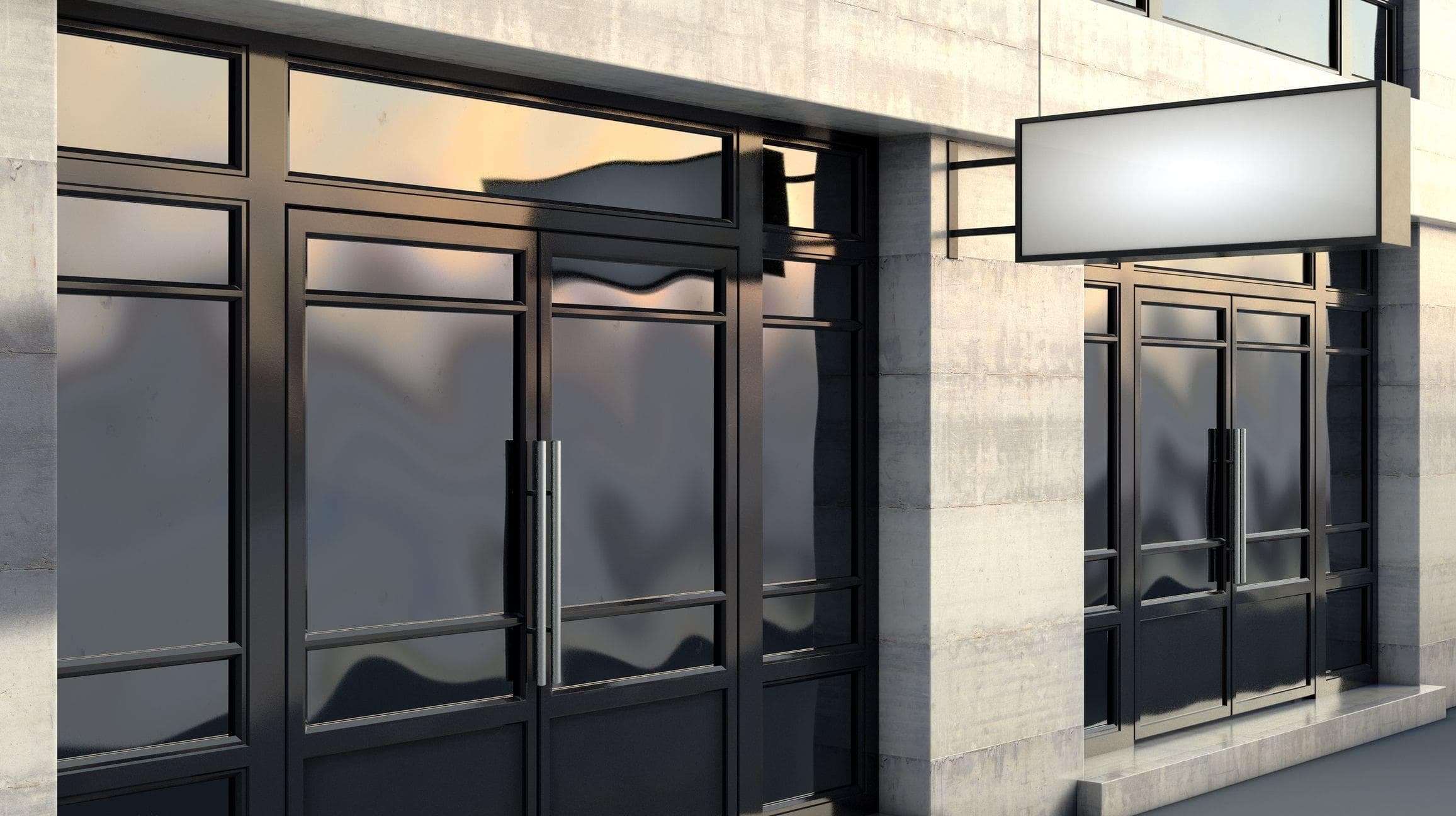Pedestrian Doors: Performance-Related Assemblies To Consider
Pedestrian doors are used in a variety of commercial and industrial settings to allow people to enter and exit the fronts, sides, and backs of buildings. Here’s an overview of four things to consider when choosing materials for your pedestrian door.

1.) Acoustics
Pedestrian doors play an integral role in controlling the movement of sound through a building. If you want to keep noise levels down in your facility, here’s a look at three door materials that could do the trick.
- Steel doors filled with a specialized acoustic core provide a high sound transmission class (STC) rating.
- Wood naturally absorbs sound and can effectively block noise from entryways, hallways, and stairwells.
- Glass doors offer the least amount of soundproofing. However, solid-core and laminated glass doors offer the best sound deadening qualities. Furthermore, installing gaskets, sweeps and weatherstrip can also help improve soundproofing.
While an acoustic door is an important element, if you want to create a truly quiet space, the walls and ceiling materials should have noise-resistant properties too.
2.) Thermal efficiency
Depending on the needs of your business, it’s important to consider how effective each door material is at keeping your facility at a comfortable temperature. Here’s an overview of the insulating properties of each material type.
- Steel doors provide superior insulation and often feature polyurethane or foam inserts. This allows them to resist extreme temperatures, rain, snow, wind, and more. However, they tend to conduct temperature and may become hot or cold to the touch.
- Wood doors are less energy-efficient than steel doors. However, many wood doors feature a solid wood core for enhanced insulation. Unfortunately, since wood is a natural material, it reacts to changes in humidity and temperature, which means that heat can escape even if the door is properly sealed.
- Glass doors made of double- or triple-paned glass retain a significant amount of heat. This is because the panes have krypton or argon gas between them which are far more insulating than plain air.
One of the biggest factors in thermal efficiency is having a properly installed door. This will ensure that there are no gaps for air to escape.

3.) Functionality
The type of pedestrian door you purchase will greatly depend on how you plan to use it. For example, a manufacturing facility may require a more durable door than a hospital or university. Here’s an overview of some of the functional features of each material type.
- Steel doors are strong, durable, and can meet high-traffic demands, making them most suitable for industrial applications. They’re also available in fire-, blast-, and bullet-resistant versions. In addition, the thick steel prevents the door from being tampered with or kicked in.
- Wood doors are long-lasting and can be fire-rated with mineral-filled materials. In addition, compared to steel, scratches or dents are easily hidden in the wood. Furthermore, wood has a warm and welcoming feel and could be suitable for small businesses that want to convey a down-to-earth appeal.
- Glass doors are modern, stylish, and allow in plenty of natural light. This makes them most suitable for entryways as they make a good first impression. However, one of the biggest downsides is that they cannot be fire-rated and are thus not the best option as an egress door.
It’s also possible to purchase push, pull, and kick plates to increase the life span of your door if it’s located in a high-use area.
4.) Budget
The cost of each material could be a factor in determining whether you’ll install a single door or several doors across multiple floors. Here’s a look at the price difference between the three materials.
- Steel doors are the most affordable option and require little to no maintenance. They’re often made of rustproof materials that can resist cracking, bowing, warping, shrinking, and swelling. In addition, steel doors are easy and cost-effective to repair.
- Wood doors can be quite pricey, especially if you’re looking at custom options or pedestrian doors with glass inserts. In addition, wood doors often require considerable maintenance. For example, you’ll have to spend time and money staining and refinishing the door annually to ensure it maintains its beauty and is protected from premature weathering.
- Glass doors tend to be on the more expensive side. They’re labour-intensive to manufacture and must be professionally installed. However, glass is an extremely durable material that doesn’t require much upkeep once it’s in place.
If you need help choosing a pedestrian door for your business, the team at Creative Door Services™ can help.

Commercial Pedestrian Doors
Creative Door Services™ carries a wide range of commercial and industrial pedestrian doors from top industry manufacturers to ensure you get a durable and reliable product. We also offer professional installation, maintenance, and repair services. Furthermore, all of our doors come in both manual and automated versions depending on your budget and the needs of your facility.
Contact us today to learn more about our products and services or to get a free quote. You can find us in Kelowna, British Columbia; Vancouver, British Columbia; Calgary, Alberta; Edmonton, Alberta; Fort McMurray, Alberta; Regina, Saskatchewan; Saskatoon, Saskatchewan; and Winnipeg, Manitoba.

